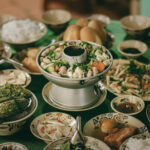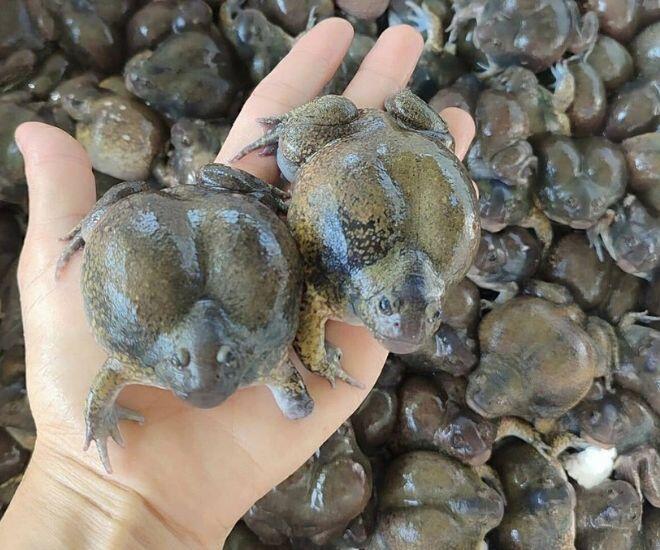
The Òn Frog, a Unique Delicacy from Ninh Thuan
According to the local people, especially the Cham community living in Ninh Thuan, the season for hunting Òn frogs begins with the first rains of the year, usually around May or June. After each heavy downpour soaks into the sandy soil, one can hear the distinctive, reverberating call of these frogs. This call signals the start of the only Òn frog hunting season of the year.
At this time, the Òn frogs, with their round bodies, characteristic swollen bellies, and slimy skin, emerge from their burrows to find food, mate, and lay eggs. Òn frogs are amphibians that typically inhabit sandy hills or mountain foothills. Their diet consists mainly of low-flying winged insects such as termites.
While their appearance may not be aesthetically pleasing and might even be off-putting to some, Òn frogs have long been a prized ingredient in the culinary culture of the Cham people. There are two main types of Òn frogs: the stone Òn frog, which is slightly larger due to its bigger bones, and the regular Òn frog.
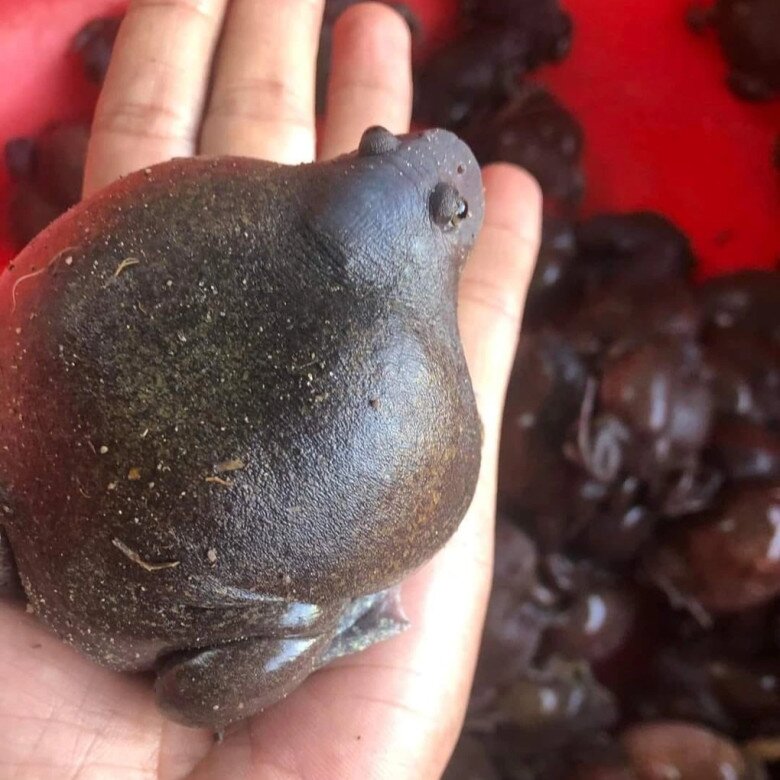
The value of Òn frogs extends beyond the local community. While they may cost around 70,000-75,000 VND/kg in the local markets of Ninh Thuan, their price can soar to 250,000 VND/kg when transported to major cities like Ho Chi Minh City, Binh Duong, or Dong Nai.
Images and videos of these frogs, prepared with their skin intact and cooked in various mouthwatering dishes, have gone viral on social media platforms. Posts and videos about trying this “unusual frog dish” have garnered millions of views. Those who have tasted it rave about its rich, unique flavor, while those who haven’t tried it yet express their hesitation or even disgust at the appearance of the dish. This contrast has sparked lively discussions, further fueling the popularity of Òn frogs in the online food landscape.
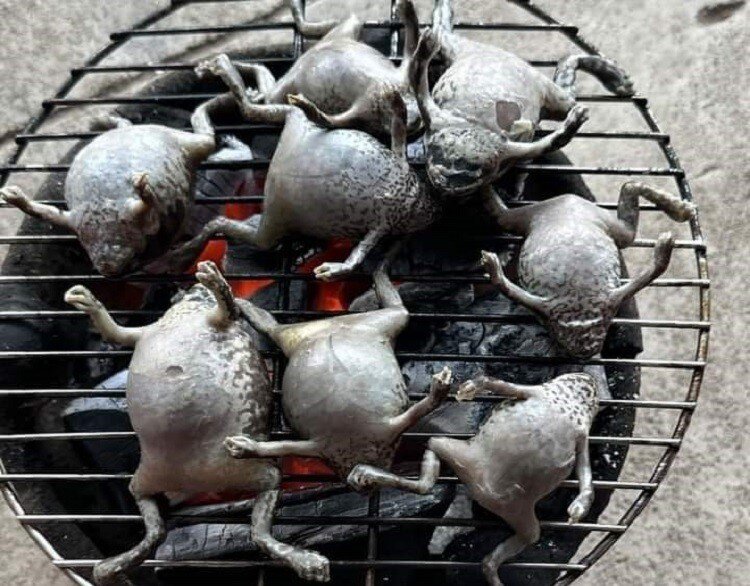
Òn frog meat is considered a rich source of protein, with soft bones that can be easily cooked into a variety of dishes. One of the most popular and beloved dishes is sour soup made with young tamarind leaves. To prepare this dish, the frogs are cleaned with salt to remove the slime, leaving the skin intact. They are then stir-fried with fragrant sauteed shallots and garlic. The soup’s broth is made by grinding chili peppers, shallot heads, and salt, then adding tamarind juice and fresh tamarind leaves. Once the broth boils, the frogs are added and cooked until done. The sour flavor of the young tamarind leaves blends perfectly with the distinctive rich taste of the frog’s unlaid eggs, creating an unforgettable culinary experience.
In addition to sour soup, Òn frogs can be prepared in a variety of delicious ways, such as steamed and served with a dipping sauce, grilled over charcoal and seasoned with salt and chili, or made into a spicy salad. The grilled dish is especially popular for its aromatic flavor, slightly crispy skin, and tender, sweet meat. These diverse cooking methods not only enhance the natural flavor of the Òn frogs but also showcase the creativity and skill of the local people in utilizing the natural resources available to them.
However, it is important to note that there are some critical food safety considerations when preparing Òn frogs. The frog’s intestines contain parasites and should be removed entirely before cooking. Additionally, thorough cooking is mandatory to ensure food safety and prevent potential health risks associated with consuming raw or undercooked frog dishes.
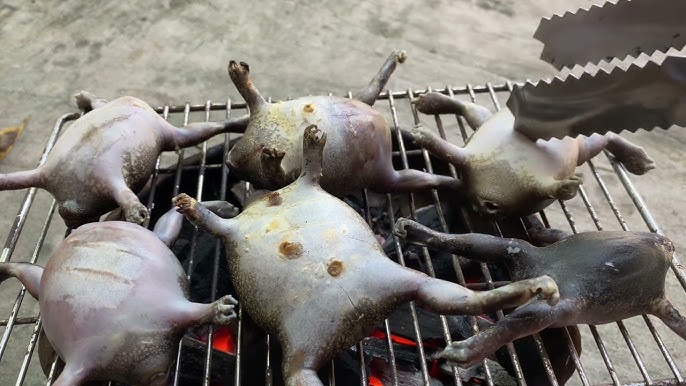
The Òn frog is not just a delicacy of the Cham people in Ninh Thuan but is also a familiar dish in the Khorat Plateau in northeastern Thailand, where it is prepared in a similar fashion. This culinary connection highlights the cultural exchange between different regions and countries, showcasing the appeal of traditional, locally-sourced dishes.
The rise of Òn frogs as a social media food trend prompts some important reflections. Similar to other traditional dishes like coconut caterpillars, wild bee larvae, buffalo skin, and “thang co,” Òn frogs are part of the ethnic minority’s culinary heritage, now being discovered and experimented with by a wider audience. However, with increased popularity comes the question of sustainable consumption and preservation. The rising demand could lead to overhunting, impacting the ecosystem and the availability of these frogs. While Òn frogs are not currently listed as an endangered species, the indiscriminate hunting of any wild animal for culinary pleasure is condemnable.
In today’s globalized world, with a heightened awareness of environmental protection, many people, especially the youth, are inclined towards more selective, civilized, and sustainable food trends. This may cause the popularity of Òn frogs to be short-lived. However, it also presents an opportunity for local communities to responsibly promote their traditional culinary culture, striking a balance between tourism development and nature conservation. This approach will ensure the longevity and sustainable development of this “unusual” delicacy.
“The Golden Sap: A Forgotten Treasure Trove of Nutrition from Nature’s Wounds”
With its subtle sweetness, refreshing nature, and bountiful nutritional value, the precious gift of the palm tree is not just a beverage, but a source of pride for the sunny province of Ninh Thuan (now merged with Khanh Hoa). This region has nurtured and harvested this unique “white gold,” a treasure that has become synonymous with local culture and heritage.
The Ultimate Delicacy in Tay Ninh: A Creepy Crawly Treat for the Brave Foodie.
The Black Lady Mountain lizard is the star ingredient in a plethora of delectable dishes, captivating the hearts (and taste buds) of diners. Each culinary creation boasts its own unique flavor profile, yet they all share a common thread – a delightful interplay between the natural sweetness and chewy texture of the lizard meat, and the creative flair of the chef.
The Breathtaking Natural Rock Park in Ninh Thuan: A Majestic Wonder Crafted by Mother Nature Herself
The Ninh Thuan National Park has been recognized by UNESCO as a World Biosphere Reserve. This diverse landscape, boasting forests, seas, mountains, and a semi-desert, attracts tourists from far and wide. The majestic mountains, in particular, captivate visitors with their Mediterranean-esque vistas.




























